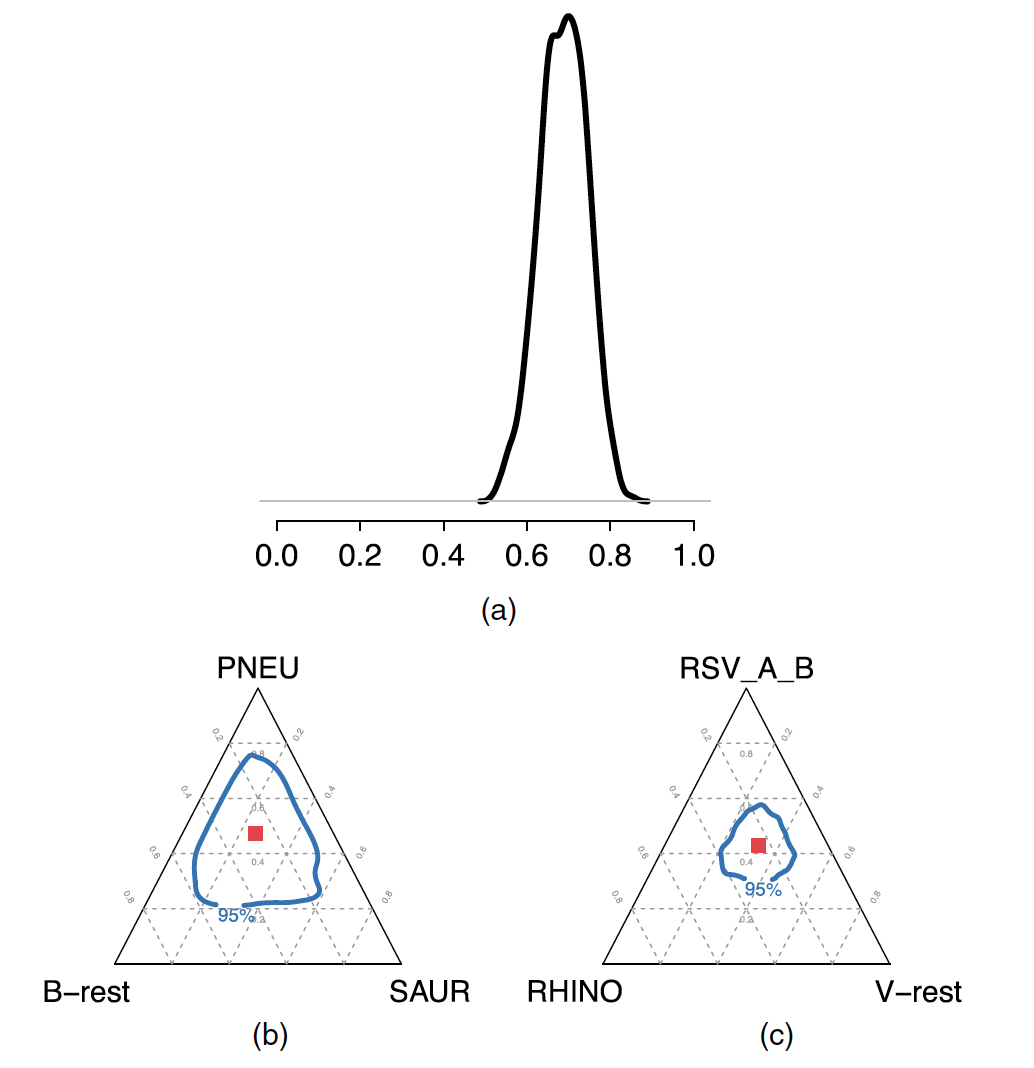Abstract
In population studies on the aetiology of disease, one goal is the estimation of the fraction of cases that are attributable to each of several causes. For example, pneumonia is a clinical diagnosis of lung infection that may be caused by viral, bacterial, fungal or other pathogens.The study of pneumonia aetiology is challenging because directly sampling from the lung to identify the aetiologic pathogen is not standard clinical practice in most settings. Instead, measurements from multiple peripheral specimens are made.The paper introduces the statistical methodology designed for estimating the population aetiology distribution and the individual aetiology probabilities in the Pneumonia Etiology Research for Child Health study of 9500 children for seven sites around the world.We formulate the scientific problem in statistical terms as estimating the mixing weights and latent class indicators under a partially latent class model (PLCM) that combines heterogeneous measurements with different error rates obtained from a case–control study.We introduce the PLCM as an extension of the latent class model. We also introduce graphical displays of the population data and inferred latent class frequencies.The methods are tested with simulated data, and then applied to Pneumonia Etiology Research for Child Health data. The paper closes with a brief description of extensions of the PLCM to the regression setting and to the case where conditional independence between the measures is relaxed.
Keywords Aetiology; Bayesian method; Case–control; Latent class; Measurement error; Pneumonia
